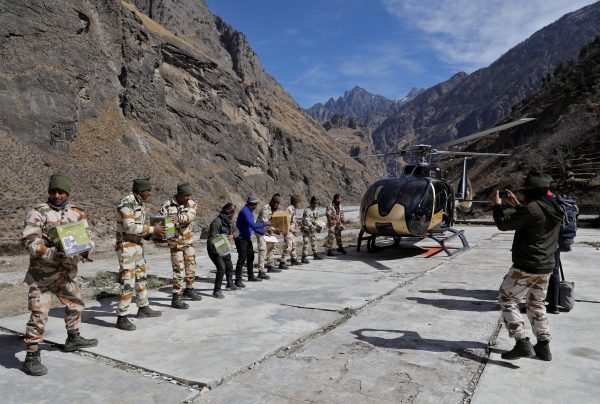While the pandemic presents China an opportunity to extend its influence in the region, over the years India has been the leader in providing humanitarian assistance and disaster relief in its neighbourhood. India’s relief strategy has gained prominence over the last two decades, coinciding with the country’s economic rise and a professed desire to be the region’s ‘first responder’.
Historically, India has largely managed to keep China out of disaster relief efforts in its neighbourhood, but the COVID-19 pandemic has emphasised the changing nature and growing complexity of humanitarian emergencies the region faces. In an era of increasing climate uncertainty, India needs to adapt its traditional approach to disaster response before other players like China fill the gap.
Even before the pandemic hit in 2020, a new range of humanitarian emergencies were already emerging. Apart from natural calamities like floods, earthquakes, tsunamis and cyclones, climate change and industrial activity have fuelled the rise of new kinds of disaster events.
Just as greater economic linkages have made pandemics more pervasive and costly, increasing levels of energy consumption have amplified short-term threats like oil spills. The need for new energy sources has in turn led to an increased risk of industrial catastrophes like nuclear disasters. Similarly, rising dependence on technology has made cyber-attacks more threatening.
India’s neighbourhood is particularly vulnerable, and there are a set of non-traditional disaster events that India should prepare for. Although the region is particularly susceptible to traditional environmental calamities, it has also seen emergencies caused by a range of other disaster events: a major oil spill off the coast of Mauritius last year, heatwaves of increasing intensity, a locust infestation in India and Pakistan, and bad air quality. Addressing this vulnerability to non-traditional emergencies should be a key aspect of India’s relief strategy going forward.
India’s assistance during these events has been mostly reactive. To build a proactive relief strategy, the country should be anticipating new forms of disasters. India’s assistance during the Mauritius oil spill came only after France deployed expert teams with chemical supplies. A multilateral or bilateral framework to tackle oil spills in the region would have instigated a quicker response. Similarly, India could have helped curb losses due to the locust emergency through pre-emptive cooperation with Pakistan.
Looking ahead, there are a few opportunities for course correction. Bangladesh is scheduled to finish building a nuclear reactor by 2023, and India must prospectively engage with its neighbour on disaster management and capacity building. It previously provided relief to Japan in the aftermath of the Fukushima nuclear disaster, which can help with establishing mitigation measures and contingency plans with Bangladesh.
Terrorism is also a common concern across the region. Apart from conventional terrorist attacks, a security issue gaining worldwide attention is cyberattacks, with similar threat levels for all South Asian countries. In 2019, India assisted Sri Lanka following a terrorist bombing by sending medical teams to Colombo. Building on this, measures such as information sharing and special visa rules for coordinating investigative procedures can be considered. Integrating counter-terrorism modules in joint military exercises can also be explored. To allay military concerns, regional and multilateral forums can be leveraged to push for greater dialogue.
India’s COVID-19 response has largely reflected New Delhi’s intent to respond and adapt to this new context. Building on this, a set mechanism to respond first to disasters in the region within a 72-hour timeframe will help solidify India’s primacy as a relief provider in an increasingly complex future.
Since India has a distinct geographical advantage over China when reaching out to countries during emergencies in South Asia, its proactive relief strategy should be used as a tool to improve bilateral ties with regional states. As emergencies become more frequent, better preparation and development of specific capabilities alone will ensure the legitimacy of the ‘first responder’ tag in India’s neighbourhood.
Saneet Chakradeo is a Research Analyst at the Centre for Social and Economic Progress (CSEP), New Delhi.

